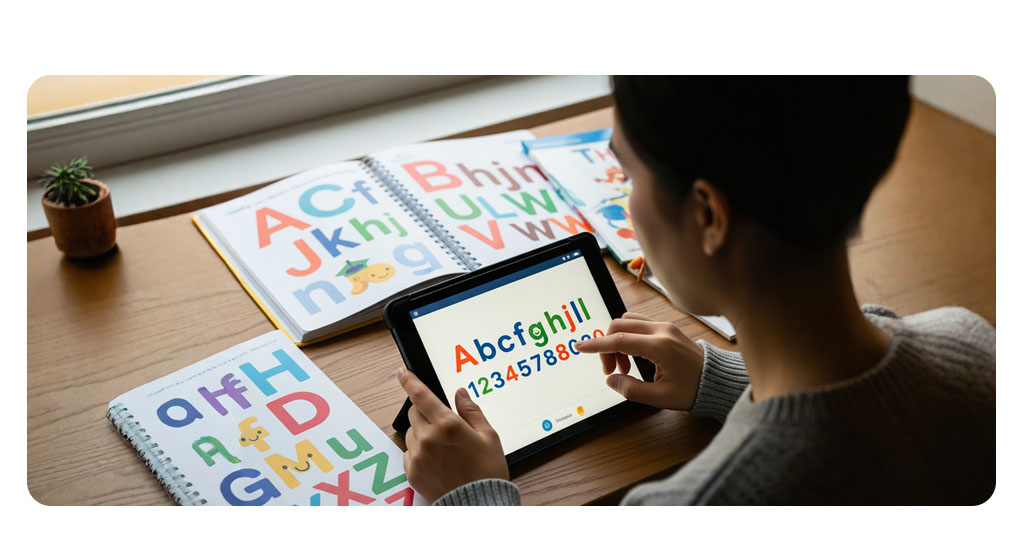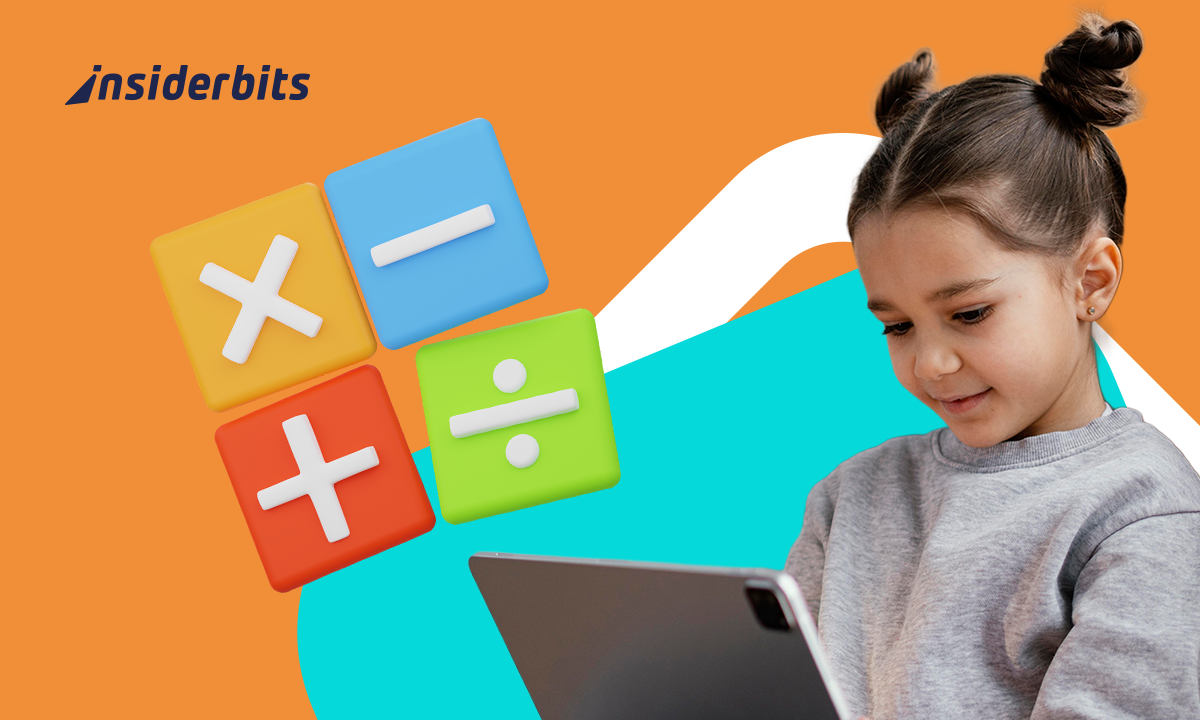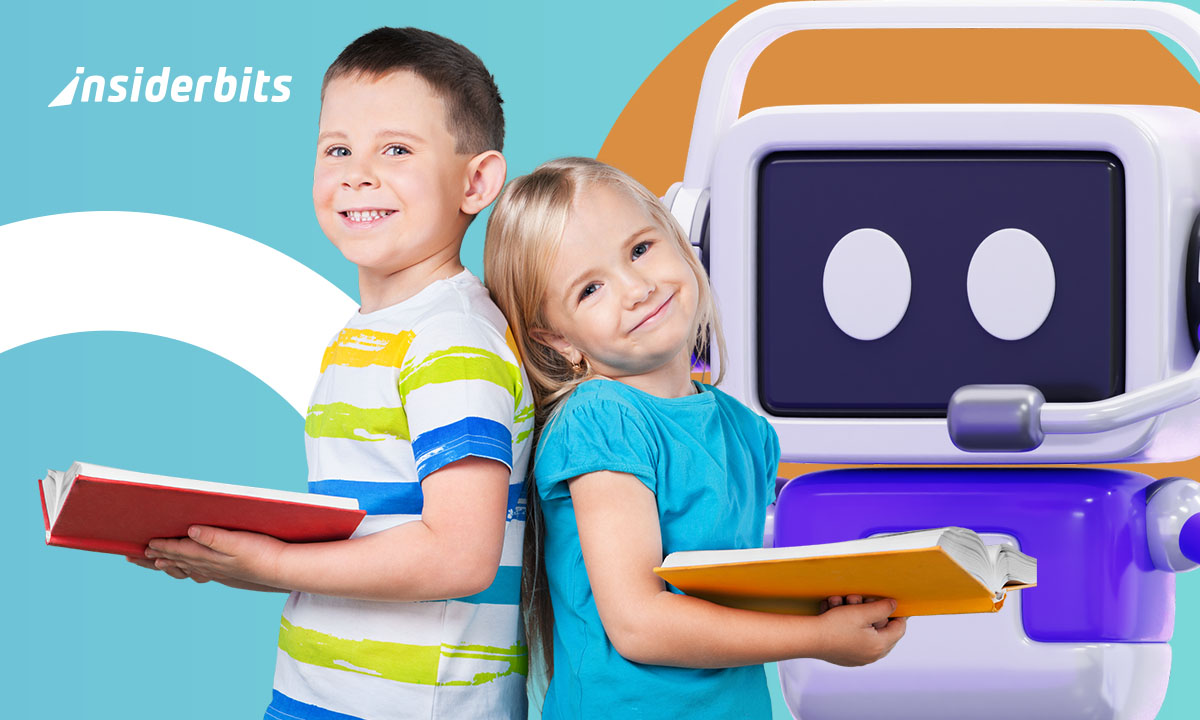Helping someone learn to read later in life takes heart and patience. To teach reading to adults, it’s important to start small, stay kind, and choose the right approach.
Each adult learner brings stories, fears, and strengths to the table. Whether you’re a teacher, friend, or family member, your support can unlock skills they’ve quietly needed for years.
This guide by Insiderbits offers practical methods and honest encouragement. Keep reading to discover strategies that actually work and make a lasting difference in someone’s daily life.
Related: Revolutionizing How We Read: Apps for Audiobooks in 2025
Understanding common barriers in adult education
Learning to read as an adult can feel like stepping into unfamiliar territory. Emotional blocks, past frustrations and daily challenges often build invisible walls before learning even begins.
Many adults carry old school experiences that left marks. Feeling judged, misunderstood or forgotten can follow them for years. These memories directly impact the motivation to learn.
To teach reading to adults effectively, it’s essential to recognize what stands in their way first. Understanding those barriers is the first step to building a truly supportive environment.
Breaking the stigma: why shame is the first barrier
Shame is heavy. For many adults, not knowing how to read feels like a personal failure. That belief silences them and makes asking for help almost impossible.
The fear of being judged can be stronger than the desire to learn. Kindness and privacy matter deeply. Respecting someone’s courage to show up is the beginning of progress.
Life gets in the way: time, work, and family responsibilities
Many adult learners have full lives. Jobs, children and bills don’t pause for classes. Education has to adapt to their time, not the other way around.
Flexible schedules, short sessions and relevant content make a difference. Learning materials that fit into real routines help adults stay consistent, even when life feels overwhelming.
Learning differences in adulthood: dyslexia, memory, and attention
Some adults have never been diagnosed with learning differences. Dyslexia, attention issues and memory gaps might be overlooked, especially in those who masked them growing up.
To teach reading to adults with these challenges, it’s important to use multisensory strategies, repetition and tools that respect how each brain learns best. One size doesn’t work here.

How to teach reading to adults with confidence
Confidence begins with connection. Adult learners thrive when they feel heard, respected, and supported without pressure. Every kind word and small success helps create a path forward.
A consistent approach matters more than any teaching tool. When mistakes feel safe and progress is noticed, learners grow stronger and more willing to keep showing up.
With honest encouragement and practical strategies, anyone can teach reading to adults in a way that uplifts and lasts. The right support can spark real change, one word at a time.
The power of listening: creating a safe and respectful space
Listening without rushing builds trust faster than any lesson. When someone feels heard, they begin to relax, ask questions and take learning into their own hands.
Interruptions, corrections or impatience shut down that openness. Just being fully present and showing respect creates a space where learning becomes possible without fear or shame.
Start with what they know: using familiar words and contexts
Adults already carry a lifetime of language. Start with names, places and phrases they recognize. That recognition creates comfort and removes the fear of unfamiliar vocabulary.
Familiar contexts build confidence quickly. Reading street signs, recipes or text messages shows learners that reading is useful and already connected to the life they live daily.
Repetition without pressure: building routine through gentle practice
Repetition works best when it feels calm, not forced. To teach reading to adults effectively, give them space to revisit words and ideas without pressure or fear.
Try using short sessions with familiar texts and everyday phrases. This gentle rhythm builds recognition naturally and creates space for confidence to grow with each repeated effort.
Related: Top E-Readers That Make You Want to Read All Day Long
Tools and materials that make reading accessible
Some tools help adults feel capable right away. Simpler texts, visual support and clear instructions reduce frustration and make learning feel manageable instead of out of reach.
Digital platforms designed for adult learners focus on everyday topics, real-life tasks and flexible formats. When materials respect their pace, learners feel more motivated to keep going.
Newsela
| Pricing: | Free, with subscription plans available. |
| Available For: | Web. |
Newsela adapts real news articles into different reading levels, making it a helpful way to teach reading to adults through relevant stories told in simpler, accessible language.
Each article includes built-in questions and vocabulary support, helping readers stay engaged. Current topics make the learning experience feel meaningful and grounded in real life.
The platform is user-friendly on both phones and computers. Volunteers and educators can pick topics that matter to learners, turning reading time into something personal and motivating.
Newsela’s best features
- Level-adjusted news content: real-world articles rewritten at multiple reading levels help adults engage with current events without feeling overwhelmed or left behind;
- Built-in questions: each text offers tools that support understanding and build vocabulary, making it easier for adult learners to connect and stay engaged;
- Simple interface with topic filters: educators can easily select relevant themes like health or work, making lessons more relatable for low-literacy adult learners.
ABCYa
| Pricing: | Free, with subscription plans available. |
| Available For: | Web. |
ABCYa combines bright visuals with interactive games that focus on core reading skills. Its straightforward design makes it a helpful way to teach reading to adults with low literacy.
The platform emphasizes phonics, letter recognition, and sentence building. Games are intuitive and repetitive, allowing learners to strengthen key skills without needing extra guidance.
Many of the activities are simple without feeling childish. With short sessions, learners can build confidence while progressing at a pace that feels comfortable and manageable.
ABCYa’s best features
- Game-based learning tools: engaging activities use repetition and visuals to build reading skills without relying on traditional textbooks or complicated explanations;
- Focus on phonics and recognition: interactive games support early reading foundations and provide practice for learners building basic skills at their own pace;
- Easy navigation and visual design: clear icons and simple layouts make the platform accessible for beginners who may feel intimidated by standard learning websites.
GCFGlobal
| Pricing: | Free. |
| Available For: | Web. |
GCFGlobal offers free reading lessons built around everyday situations, making it easier to teach reading to adults through content that feels practical, familiar, and immediately useful.
Lessons feature menus and simple emails. These real-life examples help learners gain confidence while expanding vocabulary tied to tasks they recognize from daily routines.
The platform also includes basic digital skills, which is helpful for adults new to technology. With clear audio, visuals, and instructions, the learning process feels approachable and structured.
GCFGlobal’s best features
- Real-life reading scenarios: lessons cover everyday topics like job forms, signs and emails to make learning feel practical and directly connected to daily needs;
- Clear instructions: step-by-step guidance and voice narration help reduce confusion for those beginning to teach with real-life contexts and practical reading materials;
- Free access: learners can begin immediately without signing up, removing common tech barriers for adults with limited digital experience or literacy skills.

Exercises that build confidence and fluency
Confidence builds when reading feels simple and connected to real life. When adults see progress in everyday tasks, learning becomes less scary and easier to stick with over time.
To teach reading to adults, try using repetition, clear pictures, and kind feedback. These tools help make each lesson feel possible and give learners the push to keep going.
Use materials that match daily situations, like signs or forms. Celebrate small steps, and let each success grow into the next. Learning works best when it feels calm and steady.
Using photos and situations to teach vocabulary
Pictures make learning easier. They connect words to things people already know. A photo of a bus, a meal or a store adds meaning without extra explanation.
Instead of abstract words, use common objects or situations. Learning the word “milk” becomes easier when shown with an image and tied to a routine like breakfast or shopping.
Guided repetition that builds self-belief
Repeating the same sentence or word might feel simple, but it builds memory and confidence. The goal isn’t speed—it’s comfort and control with each phrase.
Read together, then let them try. Repeat with kindness. Hearing their own voice reading clearly helps learners feel they can actually do it, even if progress feels slow.
Celebrating each page, sentence, and word
When you teach reading to adults, small wins matter. A quiet “you got it” or quick smile after a sentence helps build confidence and makes learning feel less overwhelming.
Praising effort keeps motivation steady. Saying “great job” after a tough word creates positive habits. These moments of support remind learners that every step forward is worth celebrating.
Related: Apps for Literacy: Boosting Reading and Writing Skills
How to keep adult learners motivated
Motivation can disappear quickly without encouragement. Adults may carry doubt, and a few rough moments might convince them they can’t do it. Small wins make the difference.
Clear feedback, visible results and praise turn effort into motivation. Teaching strategies should highlight every bit of growth. That’s how to teach reading to adults in a way that sticks.
Support goes beyond books. Adult learners often need emotional backing, realistic goals and people who believe in them. These things turn a few reading lessons into lasting change.
Celebrate progress loudly, often, and publicly
Being noticed matters. A high five or clapping at the end of a sentence can lift spirits and prove that effort leads somewhere worth going.
Recognition builds momentum. When others hear “you nailed that!” or “you’re improving fast”, it affirms their ability. Every word read becomes a reason to keep going with confidence.
Set real-life goals: reading a menu, a bible verse, or a work notice
Purpose gives learning meaning. Adults usually learn best when reading connects to something useful like reading recipes, medication labels or understanding work instructions clearly.
Personal goals make learning feel urgent in a good way. A goal like “read a bedtime story to my child” makes every exercise feel truly worthwhile and rewarding.
Include their circle: involving family in encouragement and support
Family support can help teach reading to adults simply by being present. A kind word or proud smile during practice can lift spirits and make hard moments feel lighter.
Loved ones don’t need special skills to help. Just showing interest, offering encouragement, or listening patiently can give adult learners the strength to keep trying every day.
Real progress happens when effort meets encouragement
Helping adults learn to read takes patience, kindness and real-world tools. With some solid support, anyone can make progress and feel proud of every step forward.
This guide was built by Insiderbits to support those looking to teach reading to adults with clarity, care and confidence using real strategies that respect how adults learn best.
There’s more to discover here! Insiderbits has plenty of practical guides on learning, technology and inclusion for those who care about making knowledge accessible to everyone.





